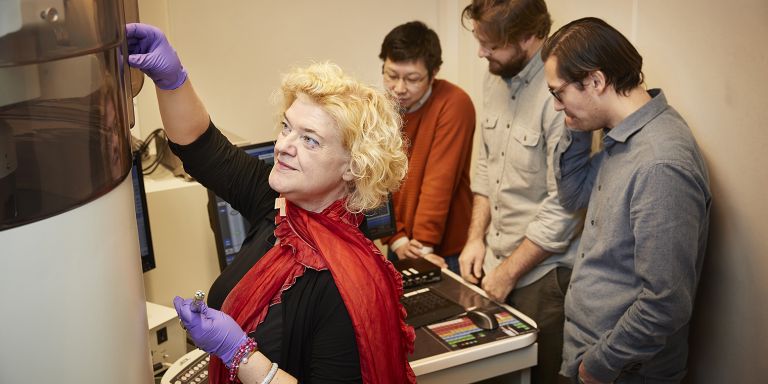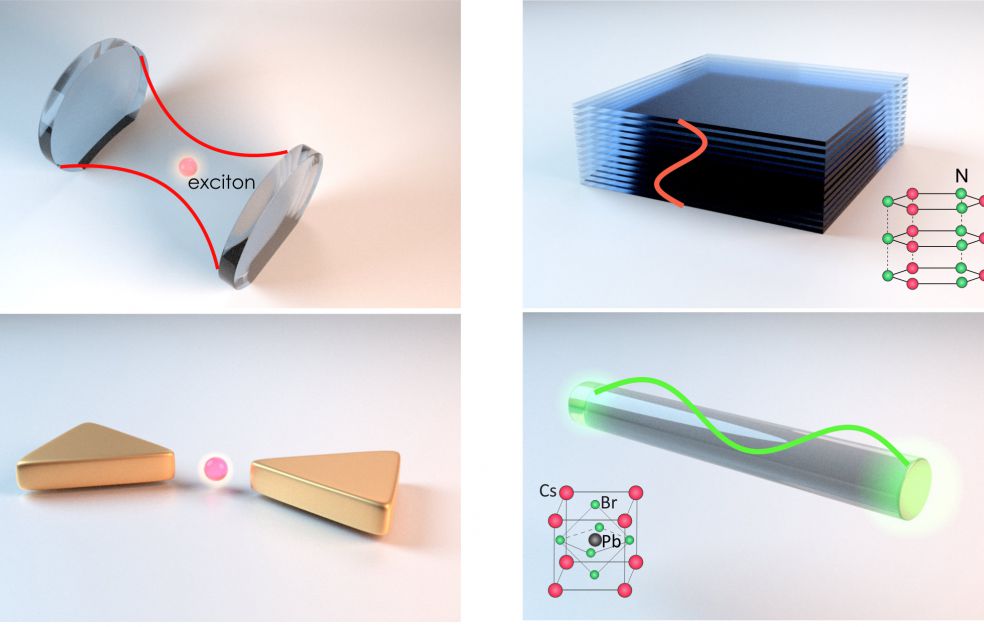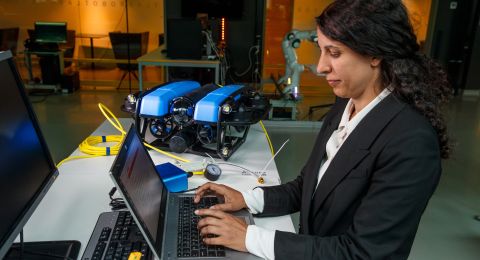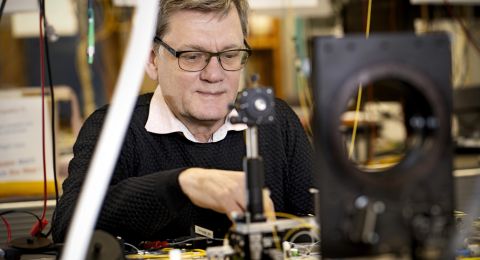
Project Grant 2019
Plasmon-exciton coupling at the attosecond–subnanometer scale: Tailoring strong light-matter interactions at room temperature
Principal investigator:
Eva Olsson, Professor of Physics
Co-investigators:
Chalmers University of Technology
Paul Erhart
Ermin Malic
Timur Shegai
Umeå University
László Veisz
Institution:
Chalmers University of Technology
Grant in SEK:
SEK 25 million over five years
“The grant awarded by Knut and Alice Wallenberg Foundation is a dream come true. It allows us to approach the same question from different angles, and gives us fantastic opportunities to ensure our research has an impact,” says Eva Olsson, who is a professor of physics at Chalmers University of Technology in Gothenburg.
She is leading a project in which five research teams at Chalmers and Umeå University are using both theoretical methods and experimentation to learn more about polaritons. The strong coupling between light and matter makes polaritons hybrids, possessing exciting optical and electronic properties.
“The beauty of this project is that we complement and learn from each other. We’re studying the same nanostructures, and by combining our technologies, we achieve resolution at much smaller scales in space and time than was previously possible. Strong coupling is normally studied at lower temperatures, but we can do it at room temperature, which has many advantages,” Olsson explains.
More detailed knowledge of the traits of polaritons may pave the way for new tailored applications such as improved chemical reactivity and quantum optical components.
Found everywhere
Polaritons do not exist solely in rarified laboratory environments; they are all around us. Timur Shegai, associate professor of physics at Chalmers and project coordinator, elaborates:
“In the clouds above us, for instance, there are minute water droplets that are polaritonic. I’ve been working in this research field for ten years, but it was actually only about a year ago that I began to realize that polaritons are all around us. It’s a kind of paradigm shift, and this project has every prospect of giving us a better understanding.”
Shegai’s research team specializes in plasmonic nanostructures and antennas. In the dust-free environment of a clean room laboratory, they are painstakingly fabricating the nanostructures that, when combined with special atom-thin two-dimensional materials, create a strong coupling between light and matter.
“It’s essential to have a good sample. Without that, it’s impossible to conduct a good experiment,” he says.
The polaritons being studied are called plasmon-exciton-polaritons (PEPs). They have the advantage of being ultrafast, not only at far below zero, but also at room temperature.
Controlling the properties
Understanding and controlling the properties of a material require knowledge of the exact position and structure of the atoms in the material. Olsson’s research team is using advanced electron microscopy to analyze individual atoms. The technique uses electrons to image nanoscale objects.
Thanks to earlier funding from Knut and Alice Wallenberg Foundation, the equipment available at Chalmers’ material analysis laboratory has improved dramatically over the past few years. This has opened up new opportunities.
“We can carry out experiments inside the microscope, which makes things really exciting. With the high resolution available to us, we can modify structures and at the same time see what happens. And understanding what is happening enables us to tailor and control properties.”
The electron microscopy experiments at Chalmers give the researchers information on how polaritons work at ultra-short length scale – less than the radius of an atom. Professor László Veisz and his team are based in the northern Swedish city of Umeå. They are experts in attosecond spectroscopy. In their lab they are studying how polaritons behave at an inconceivably short time scale. An attosecond is a billionth of a billionth of a second.
“Thanks to the excellent resolution in both time and space, we can now truly see how light and matter interact. It’s interesting and also of fundamental importance, because polaritons are a new way of understanding matter,” Shegai enthuses.
The bigger picture
If polaritons are indeed everywhere, ponders Shegai, the question is then whether nature has already used them for something unknown to us.
“For instance, it might be that plant photosynthesis can only occur because of strong coupling between light and matter.”
Olsson points out that scientists have long known that interaction takes place between light and matter. But the variation occurring at nanoscale was not known. These are details that the project is uncovering thanks to a combination of advanced microscopy and spectroscopy, theoretical work and collaboration.
“That in itself is a revelation to me. Our research is rendering visible events that occur at nanoscale. In this way we are providing the stimulus for new concepts and ideas for others to build on. As Timur mentioned, by understanding what is happening in our artificial nanostructures, we suddenly gain a clearer view of the bigger picture – such as clouds and phenomena potentially impacting our climate, or even photosynthesis.”
Text Susanne Rosén
Translation Maxwell Arding
Photo Anna-Lena Lundqvist, Andrew Yankovich, Dennis G. Baranov





